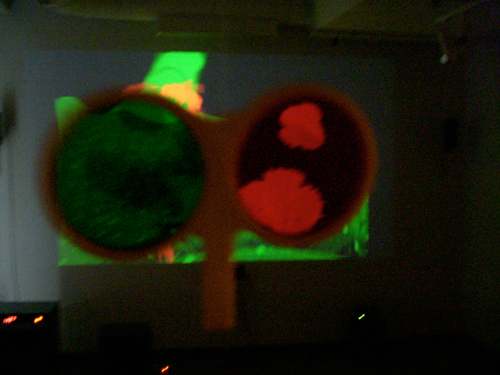
Pixilerations [v.5] Part of FirstWorksProv Festival of Digital Media and Interacive Performance
191 Westminister Gallery
191 Westminister St.
PVD, RI
[Stereoscopic glasses, video (2 min.)]
Narcissus is a well-known Greek mythological fable of complete and utter love to oneself. This tale recounts the viewer’s fascination with its own reflection. The universal myth interpreted through psychoanalysis is usually understood as a negative feature, to have a deep narcissistic trait is a kind of immature selfishness that only leads to individualism and loneliness.
In Narcissus case, his absorption leads him to a tragic end: “After so much pining after himself, he ‘dropped his weary head on the green grass and death sealed the eyes that marveled at the master’s beauty. And even when he had been received into the infernal abodes, he kept on gazing at his image in the Stygian pool’ (Ayers,M., 20023).”
Narcissism is not necessarily a negative trait and as for any theory, there is always an antithesis. Julia Kristeva, a contemporary of Lou-Andreas Salomé, wrote a positive and almost humorous observation about narcissism pointed out in Karla Shultz’s essay, In Defense of Narcissus. It can sum up this precarious balance between a healthy ego and egocentrism: “Actually, Narcissus is not completely without object. The object of Narcissus is psychic space; it is representation itself, fantasy. But he does not know it, and he dies. If he knew it he would be an intellectual, a creator of speculative fictions, an artist, writer, psychologist, psychoanalyst. He would be Plotinus or Freud. (Schultz,K., 1994).”
From ages 1 to 2, I wore an eye patch. I remember looking at my mother while she stripped off the white paper on the back of the round shape to fix it on one of my eyes. One eye remained lit while the other was left in the dark. One wandered out and about the world, while the other was kept in a kind of insomniac shade.
My Arm Was Cut Off is a video that rescues parts of my ophthalmologist visits where I was prompted to wear stereoscopic glasses to measure the level of my eye’s laziness. By using two channels in the processing of the video, the viewer can engage through the stereoscopic glasses a narrative that, opposed to the original intention of creating a 3-D integrative experience for the eyes, is split in two. One video channel is annulled by the same color in the glasses thus making it invisible. The other channel is contrasted by the opposite color of the Plexiglas and the result is visibility.
The red channel in the story is the “manifest content” and the “latent” (Freud, S., Strachey.J.,1952) of a dream I had about the loss of an arm. It carries my image in the present, falling asleep and representing a blurry loss of an arm by the cutting action of a knife. Along that succession of images, there is a phonetical interpretation of text and sound that matches with the visual content.
The interpretation of this desire ends up being attached to a dream as philosopher and critic Slavoj Žižek explains about Freud’s triad, “the inconscious desire”, in a way “intercalates itself in the interspace between the latent thought and the manifest text; it is therefore not ‘more concealed, deeper’ in relation to the latent thought, it is decidedly more ‘on the surface,’ consisting entirely of the signifier’s mechanisms, of the treatment to which the latent thought is submitted (Žižek 1994).”